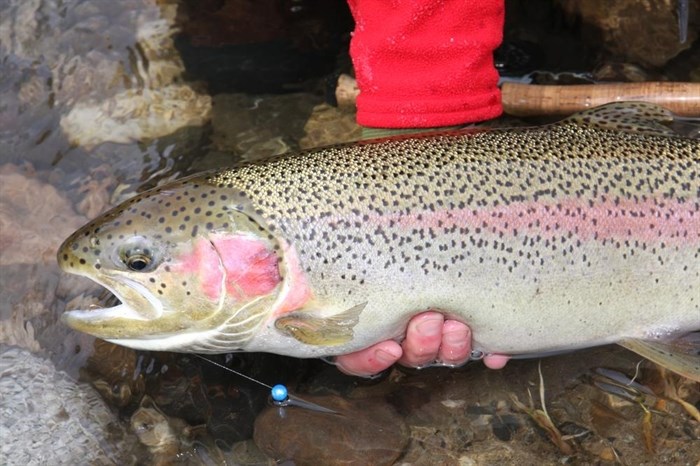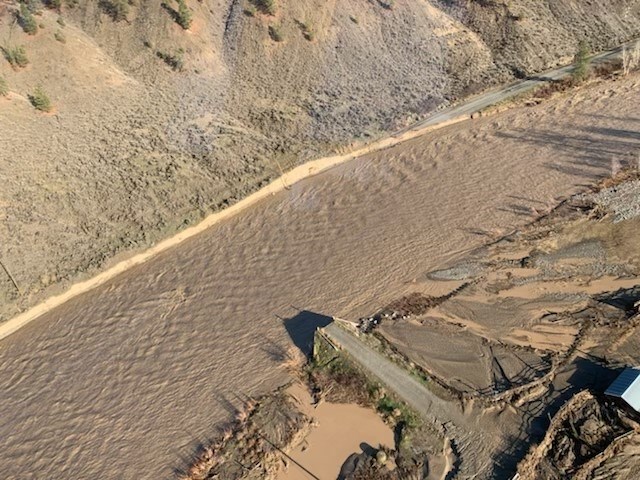
Image Credit: Shutterstock
February 25, 2024 - 12:00 PM
Steven Rice is trying to rebuild a once vibrant Steelhead trout fishery on the Nicola River.
In the fall of 2021 floods washed away Highway 8 between Merritt and Spences Bridge, where Rice is from, sweeping away structures, properties and trees. Not only was the community devastated, the steelhead trout spawning beds were too.
While the province continues to plan permanent repairs for the highway, Rice said it is a perfect window of opportunity to pull resources together and rebuild the river and spawning beds.
“We need experts to see what needs to happen to restore sustainable spawning beds,” he said. “We need to bring the biologist, Ministry of Transportation, Indigenous community and provincial decision makers together to make a comprehensive plan.”
A resident of the community for almost four decades, Rice said at one time the steelhead fishing grounds were the best in the world, drawing in fisherman from Japan, Europe and the US who spent money at local businesses from October to December every year.
“It was an economic driver for rural BC for decades,” he said. “How do we enhance tourism in our province? Fix the stuff that is broken and the steelhead fishery is one. Now we’ve lost the whole damn thing.”
Roughly two decades ago, numbers of Steelhead trout making the long distance up the Fraser River to the Thompson and then to spawning beds in the Nicola River began to dwindle, which Rice suspected is from overfishing.
“There was a steelhead fishing derby every year,” he said. “Lots of people were pulling up 32-pounders, they’d weigh them in the store for the contest. The riverbanks were lined with hundreds of fisherman and they fished the hell out of it.”
Eventually the steelhead fishery was regulated as a catch and release only, but Rice said it was too late.
“They continued to dwindle and around five years ago the numbers got really low,” he said. “At one point the Fraser Basin Council Board was working hard to bring the steelhead back but the project fell apart about three years ago.”

This aerial photo shows a section of Highway 8 washed out in the floods of November, 2021.
Image Credit: SUBMITTED/ Facebook/ BC Ministry of Transportation
When the floods of 2021 took out the community ,it took out the spawning beds, the shade trees on the riverbanks and left the river wider and more shallow, all factors that increase water temperatures.
“Higher water temperatures could be the final nail in the coffin for the steelhead fishery, and for other species of fish too, there are a few.”
READ MORE: Biologists ask for your help to save Okanagan bats from deadly fungus
Rice has lived in the area since 1986. He has sat on the Thompson Nicola Regional Board, is a chair on the Spences Bridge Volunteer Society and a member of the Steelhead Society of British Columbia.
Long before he was elected as a director for the TNRD, Rice was going to meetings about steelhead.
“Locally, we’d love to see this fish swim another day for our children and grandchildren to see,” he said. “I advocate out of responsibility for the economic well-being of this community.”
READ MORE: Sicamous council stops progress on Shuswap portion of rail trail
He started a petition this week to rebuild the steelhead spawning grounds and after he collects 1,000 signatures he intends to present it to the provincial government.
“Moving the needle on this has to be a movement by the people, it’s a precious moment in time. I’ve been screaming about this for three decades and now is not the time to stop.”
READ MORE: DITCH DUMPING: Okanagan, Kamloops residents shocked by amount of garbage on roadsides
Steelhead trout are listed as endangered in Canada, with dramatic population declines over the last three generations because of declining habitat quality and reduced survival rates while at sea, interception by fisheries, and competition from hatchery fish. The returning numbers of spawners are now very low and future population reductions are expected.
According to the Ministry of Transportation and Infrastructure website, some work was done to improve fish habits during emergency repair work in 2022, and the Ministry will “continue to work with Indigenous communities to identify priority fish habitat sites.”
To contact a reporter for this story, email Shannon Ainslie or call 250-819-6089 or email the editor. You can also submit photos, videos or news tips to the newsroom and be entered to win a monthly prize draw.
We welcome your comments and opinions on our stories but play nice. We won't censor or delete comments unless they contain off-topic statements or links, unnecessary vulgarity, false facts, spam or obviously fake profiles. If you have any concerns about what you see in comments, email the editor in the link above. SUBSCRIBE to our awesome newsletter here.
News from © iNFOnews, 2024